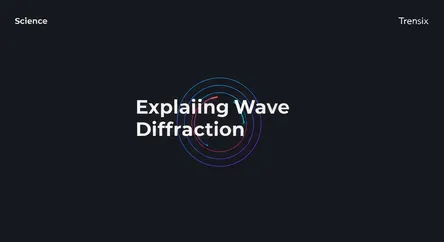Science
Explaining Wave Diffraction

Discover diffraction, the phenomenon where waves bend around obstacles. Learn how it affects everything from light to astronomical observations.
What is it?
Diffraction is the bending of waves as they pass around an obstacle or through an opening. This phenomenon is a key characteristic of all wave behavior, from light and sound to water waves. When a wave front encounters a barrier, it spreads out into the region that would otherwise be a shadow. The degree of bending depends on the wavelength of the wave relative to the size of the obstacle or aperture. Significant diffraction occurs when the wavelength is roughly the same size as or larger than the gap it's passing through.
Why is it trending?
Diffraction is a foundational physics concept with renewed relevance in modern technology. It's central to discussions about advanced astronomical instruments like the James Webb Space Telescope, which uses diffraction gratings for spectroscopy to analyze exoplanet atmospheres. Advances in materials science also rely on it, using X-ray diffraction to map the atomic structure of new materials. Furthermore, research into quantum mechanics and next-generation holography constantly pushes our understanding and manipulation of wave diffraction.
How does it affect people?
Diffraction impacts technology everywhere. While it fundamentally limits the resolution of optical instruments like microscopes, it's also harnessed for incredible applications. Spectrometers use diffraction to separate light, a crucial technique in chemical analysis and astronomy. The colorful shimmer on a CD is a direct result of light diffracting off its tiny tracks. It's also the principle behind holography, used in security features on credit cards and passports to create complex 3D images.